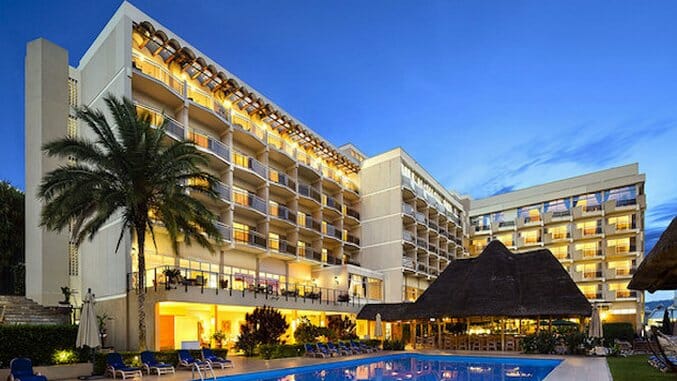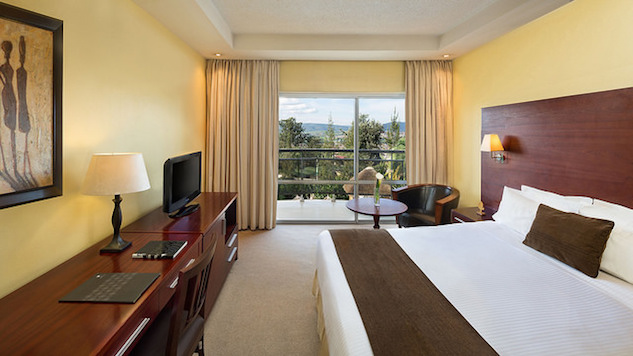Hotel Intel: Hotel Rwanda, or Hotel des Mille Collines

Photo by Innocent kaneza, CC BY
“This is the Hotel des Mille Collines, but better known as Hotel Rwanda,” my guide/driver said as we approached a security checkpoint flanked by off-white walls with the name of the hotel written on them in blue. “Wait, what?” I responded. Clearly, I hadn’t done my research.
This is the hotel the 2004 film Hotel Rwanda was based on; the very property that 1,268 Tutsi and Hutu refugees hid in during the Rwandan genocide in 1994.
Yes, it was partially filmed on the property, according to my guide Gilles, but you’d never guess it was a landmark that saved thousands of lives. They don’t gloat or tout themselves as the place that saved lives. And why would they? While the manager, Paul Rusesabagina, and the building itself were heroes, this is not a time people want to remember. The only reason the Oscar-nominated film starring Don Cheadle was made in the first place was because something so horrid happened. So, why would they advertise that only two decades later? What do they even do? Put a plaque by the entrance that said, “This is the very spot thousands of innocent civilians hid terrified for their lives”?
The hotel, which has seen multiple owners since the genocide, has moved on.
First Impressions
I had never seen the movie or learned about this particular hotel’s role in the genocide, so I was slack-jawed. I was quickly brought up to speed as we pulled onto the long driveway that led to my accommodations for the night. Hotel des Mille Collines opened in 1973 as Rwanda’s first grand hotel. When the Hutus began their 100-day slaughtering, the Hutu manager, Rusesabagina, risked his life to protect his Tutsi wife and other targets, and the hotel became a safe haven. The 113-room hotel with four restaurants and bars and an expansive lobby didn’t have the space for all of these people, but Rusesabagina didn’t turn anyone away. He provided sanctuary to refugees free of charge, with sometimes 10 people to a room and others sleeping in the hallways or by the outdoor bar/pool area.
Blown away by this true story, I looked for a sign of this heroism at the hotel’s entrance, but all I found was an off-white block building with four stories of angular balconies, a handful of flags, an overhang above the entrance and a security X-ray machine directly inside the front doors. It may not be the most elegant entrance, but it makes sense; it was only 20 years ago that the hotel was stormed and shot at by Hutu militants. Clearly, people are capable of all types of evil; better to be safe.
After a quick search, I walked down a few steps into the bright and airy lobby, where Rusesabagina saved the lives of hundreds by bribing the militants with fancy spirits and fine cheese, which the four-star hotel still serves in its rooftop restaurant Le Panorama. Right in front of me was a stone wall, which hints at a story waiting to be told, but they veered away by opting for an otherwise modern theme. Turning right brought me to a seating area and reception desk. Cream walls, ceilings and tiled floors demonstrate the desire for a clean slate, as does the work by local artists that is featured in the lobby and rotated as each piece is sold. When I was there, there were beautiful multicolored elephants hanging behind reception.
Large windows on the opposite side, facing the brown reception desk, frame a vast view of Kigali from above. Looking out onto the city, it’s hard to picture a time when smoke and fired filled the sky and terror filled the streets, as the city is now a burgeoning metropolis.
Patterned couches and wallpaper on one wall give the lobby a bit of character without sacrificing sophistication.

